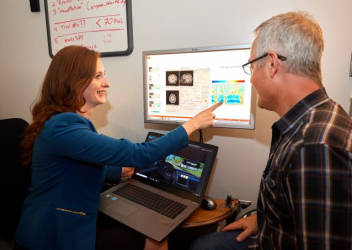Research In Action
Research In Action
Breadcrumb

Over the past decade, we have seen a rise in mental health encounters among youths for mood disorders, which include both depressive and bipolar disorders. Mood disorders can broadly impact the physical and emotional well-being of teens and young adults. And epidemiologically, these disorders often develop at the age when individuals are eligible to get a driver’s license.
When we examined the literature on driving and mood disorders, we found that most studies focused on adults. In this population, there are associations between mood disorders and increased traffic violations and motor vehicle crashes. Adolescents, however, are different from adults given their developmentally related crash risks. Without a better understanding of the licensure and driving outcomes of adolescents with mood disorders, it can be challenging to develop effective counseling recommendations or identify areas important for future research.
We sought to address this gap in the literature with our study recently published in JAMA Network Open. We conducted a retrospective cohort study using the NJ-SHO Data Warehouse to examine both licensure and driving outcomes among adolescents with and without mood disorders. Some of our key findings included:
- Adolescents with mood disorders were 30% less likely to acquire a license compared to their peers without mood disorders.
- Adolescent drivers with mood disorders had slightly higher overall crash rates at both 12- and 48-months (16% and 19% higher, respectively) post-licensure.
- Adolescents with mood disorders were more likely to experience increased rates of certain adverse driving outcomes.
- These included at-fault crashes, night crashes, and moving violation citations.
- Adolescents with mood disorders had double the rate of license suspensions compared to their peers without mood disorders (48-month aRR: 1.95, 95% CI: 1.53-2.49).
Mobility Is Key to Youth Well-Being
Obtaining a license to drive is an exciting milestone for many adolescents. Importantly, driving is associated with improved health, educational, and employment outcomes, likely by supporting mobility, self-sufficiency, and social connectedness, all important to mental health. Our study demonstrates how youths with mood disorders may not experience these benefits of driving, which could increase social isolation and other adverse psychosocial effects.
As mood disorders can impact concentration and emotional regulation, they can also affect neurocognitive skills that are used in driving. The adverse driving outcomes we describe among adolescents with mood disorders are likely related to these factors, though the exact mechanisms by which mood disorders affect driving are still an important area of study.
As they discuss safe driving practices with patients and families, clinicians should be aware that the effects of mood disorders on young drivers is still an area of ongoing research. Overall, our study highlights the important yet sensitive balance between autonomy and driving safety, as well as the critical need for further research in this area.




